Steel blue thistle-like flowers on branched stems. Beautiful garden accent and cut flower. Thrives in poor soils.
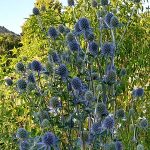
- Sea Holly
- 5
- Sun
- 2' x 1'
- Europe


Steel blue thistle-like flowers on branched stems. Beautiful garden accent and cut flower. Thrives in poor soils.
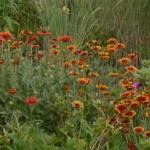
Cheerful red flowers with yellow tips. Adaptable and reliable, this native wildflower blooms for most or all of the summer. Give haircut to in mid-summer to promote more flowering. Will seed out without being invasive. Tolerates a wide variety of soil types. Pollinators: native bees, honey bees. Firewise. More information here.

Gaura has long graceful spikes of pinkish or white blooms float on the breeze from mid-summer to fall. Long-blooming, dramatic, easy.
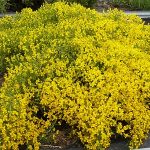
Lydia broom, a well-behaved flowering shrub, is a stunning sight in late spring,–covered with bright yellow pea-like flowers. Otherwise, the evergreen mound of wiry stems provide good structure year round. Tolerates clay. Don’t confuse with invasive Scotch Broom. Choice!
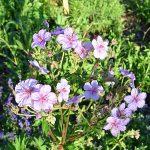
Sticky Purple Geranium makes a lovely addition to informal meadow-like landscapes. Native to higher elevations in Idaho and across the mountain west, it thrives in moist to dry settings. Blooming in mid-spring, it attracts a variety of native pollinators and honeybees. Firewise.

Prairie Smoke has early summer blooms, followed by distinctive feathery pink seed heads. Appreciates moderate water and does best in part shade, except at higher elevations, where it thrives in full sun. Pollinators: native bees. Firewise. More info here.
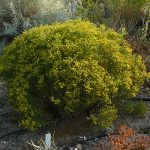
Broom Snakeweed has attractive deep green, finely cut foliage on this tough Owyhee County native. Plants are completely covered with tiny yellow blossoms, mid to late summer and into early fall. Evergreen.
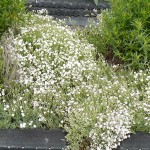
Creeping Baby’s Breath is a delicate spreading ground cover, creeping around other plantings and falling down walls. Covered with a burst of pink or white blooms, late spring. Easy and rewarding.
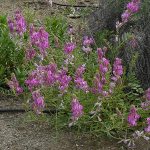
Utah Sweetvetch is a low, sprawling plant with beautiful pea-like blossoms. Winds in and around larger plants. Supports native pollinators and fixes Nitrogen in the soil.
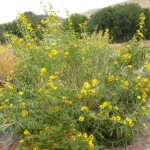
Maximilian’s Sunflower is a vigorous perennial sunflower that comes back from roots every spring and grows to 5 or 6 feet. In late summer a profusion of smallish sunflowers, cover the upright stalks. Excellent fall interest, great along fences. Late season nectar source for bees and butterflies.
A short perennial sunflower, perfect for meadows. May spread by rhizomes to form colonies. It produces nutritious seeds for birds.
A very short, mid-season sunflower, native to dry mid-elevation slopes in WY, Mt and SE Idaho.
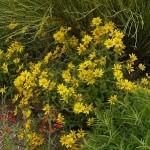
Cheery daisy-like flowers continue blooming all summer, especially beautiful in informal native or prairie gardens. Can seed out but is easily controlled. Tolerates some shade. More information here.
Tall spikes of tubular red flowers in summer attract hummingbirds. The basal leaves are long and narrow, but not sharp as in a true Yucca. Needs well-drained soil.

Jones’ False Golden Aster is a little known dwarf aster from southern Utah. Gradually spreads to form flat mats of gray-green leaves studded with bright yellow daisies all summer. A fantastic rock garden plant, it thrives in the heat requires little moisture and is not invasive.
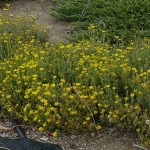
Hairy Goldenaster covers itself completely with small yellow aster-like flowers in early summer. Needs no water once established.

Coralbells has dramatic spikes of cream to white flowers rise from a base of scalloped deep green leaves. Favors rock outcroppings; great in full sun or dry shade. Very long blooming in our Boise garden. Firewise. Choice! More information here.
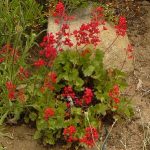
Alpine or Red Coralbells is another charming native Heuchera, this one with deep red to pink flowers on delicate wands. Great for full sun or dry shade. Sculpted evergreen foliage. Firewise.
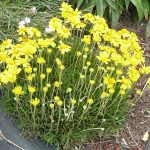
Sundancer Daisy is a cheerful, showy, long-blooming western wildflower and is a gem in the xeric garden. The attractive thread- leaf foliage is covered by bright-yellow, long-stemmed daisies in summer. Remarkably adapted to arid regions, from low desert to mountains. More information here.
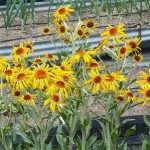
Large yellow daisies pop out on this mountain meadow plant in early summer.
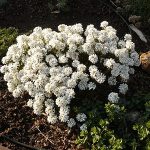
Very low growing, evergreen cushion with dark green leaves and large, white flowers in spring that can fade to lilac. Sun, very well-drained soil.
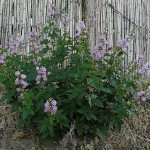
This vigorous native perennial grows as large as a shrub then dies back to the ground each winter. Its atrractive maple-like leaves are accented with many beautiful hollyhock-like pink flowers. More information here.
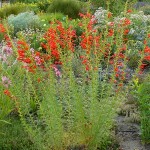
This fantastic biennial, native to Texas, produces a profusion of tubular red flowers in the second summer. Closely related to our native Scarlet Gilia, it is proving to be more reliable in cultivation. And, being from Texas, it is naturally bigger, bolder and showier. A real magnet for Hummingbirds
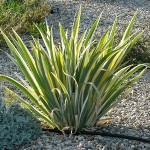
Grown for its striking foliage, this Iris also produces a lovely lavender flower in late spring.
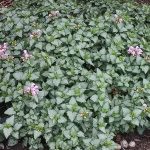
A groundcover that loves shade! Its variegated leaves light up a dark shady area, yet the plant will also grow in sun. Not picky about soil type or moisture.

This is a classic mid-sized Lavender. Spikes of fragrant lavender flowers in early summer.
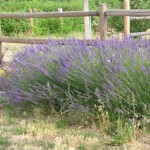
Lavender “Grosso” is a vigorous, large lavender with long, deep purple flower spikes in early to mid-summer. Extremely drought- tolerant, good foundation planting. Flower spikes may be cut back for repeat bloom. Evergreen foliage. Pollinators: bees.
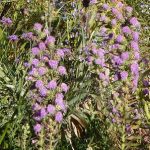
Tall spikes of pink flowers late summer. Nice cut flower. Nectar for butterflies. Firewise.
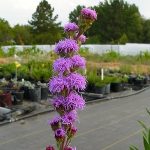
Rocky Mountain Blazing Star produces tall stalks of lavender/purple flowers. This prairie native is a robust grower and does best in fertile soils with infrequent but deep soakings. Nectar plant for Monarch and other butterflies. Excellent cut flower. Firewise.
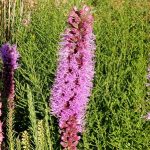
Dense spikes of lavender-pink flowers on tall, thick stems. Great pollinator plant. Prefers dry, sandy soil. Firewise.
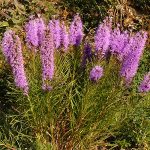
A showy plant for dry gardens or shortgrass meadows, Dotted Gayfeather produces lavender bottlebrushes that bloom from the top down. Deep tuberous taproots account for extreme drought tolerance and long life. Nectar plant for butterflies. Firewise.

Dense Blazing Star: With showy spikes of pink flowers over grass-like foliage, Dense Blazing Star will add stunning variety, texture & beauty to your border or meadow. Excellent cut flower. Nectar plant for butterflies. Firewise.
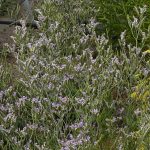
This dwarf, perennial statice produces a bouquet of airy, blue-lavender flowers in mid-summer. The flowers are lovely in dried arrangements.
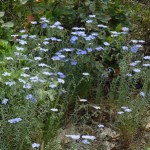
Lewis Flax, a vigorous native that produces masses of cheerful little blue flowers from late spring through mid-summer. Each flower lasts only a day, drops to the ground and is replaced by more the next morning. Charming. Pollinators: bees.
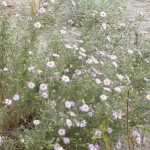
Hoary Aster: The big purple daisies of this fall-blooming biennial light up the Boise foothills in fall. In the garden, the plants will flower vigorously, then self-sow and reappear the following year. Pollinators: bees, butterflies.
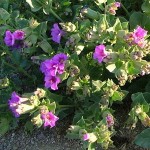
Colorado Four O’Clock dies back to its enormous root in winter. Then, late in the spring, shoots begin to emerge and once the plant starts growing—there’s just no stopping it! It can sprawl far and wide and looks lovely draped over a wall. Long-lived! Firewise. More info here.
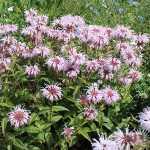
Bradbury’s Beebalm is shorter and earlier blooming than the more common Monarda fistulosa. This more compact beebalm will work well as an edging plant or at the front of a bed. Tolerates poor soil and dry conditions. Can spread gradually by root.
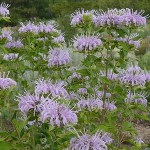
Beebalm or Wild Bergamot is a widespread native wildflower with clusters of tufted lavender flower, an important food source for native bees and butterflies. A long-lived, clump-forming perennial, it is attractive at the back of a border or in a meadow-like setting. Firewise. More information here.
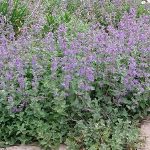
A vigorous, long-blooming catmint. An excellent choice for pollinators. Can seed out aggressively. Firewise.
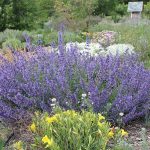
A vigorous, long-blooming catmint, great choice for pollinators. Will not spread by seed.